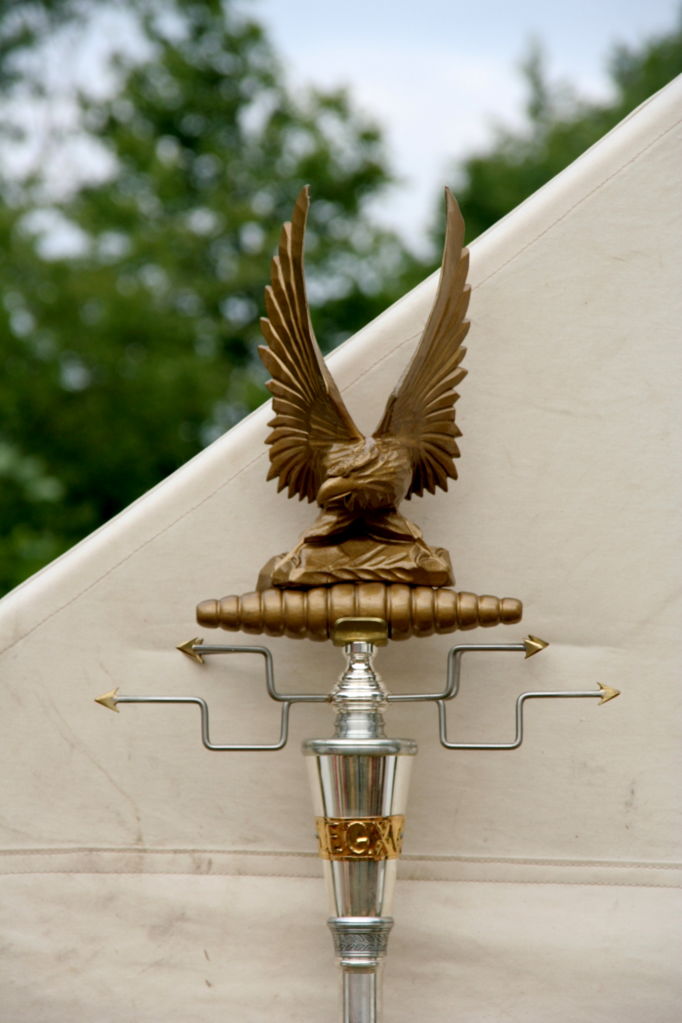Did you know that for nearly 150 years off and on, the Roman Empire fought to conquer Mesopotamia?
At the time, the area that is now Iraq, Iran (Persia) and more was ruled by the Parthian Empire.
What was the Parthian Empire like, and how did they collide with mighty Rome?
The Parthians formed from the steppe tribes of Central Asia (for details on these tribes and their impressive contributions, you can listen to this mp3 of the Hardcore History podcast).
The Parthians rose and wrestled Persia back from Alexander the Great’s successors, and combined the martial prowess of the steppe tribes (they were unmatched horsemen) with the cultural, organizational and technological achievements inherited from the Persian empires of old. While the Parthian Empire was never as powerful, or expansive, as the Persian empires of Cyrus the Great and Darius that preceded them, or the Sassanids that followed them, they were nonetheless very formidable, and even their Roman enemies recognized they were not “barbarians,” but an advanced urban civilization to be respected and feared. Their capital was near modern Baghdad.

Coin showing King of Parthia Mithridates I
Rome even sent ambassadors and tried diplomacy with the Parthians when they weren’t attacking them. The first contact the Romans had with Parthia was around 96 BC, when they sent an envoy that negotiated the boundary between the two empires at the Euphrates. Plutarch reports that at the meeting, the Roman ambassador managed to arrogantly take the center seat at the table, and that the Parthian king quickly put his ambassador, Orobazus, to death for allowing such an affront to Parthian dignity.
The Romans did not view the Parthians, or anyone, as equals. Rome saw itself as the greatest nation ever, superior to any other empire in history, so they often viewed invading and annexing other peoples as helping them (i.e. “they will greet us as liberators!”) But, to be fair, they usually DID benefit the lands they conquered. It’s like in that Monty Python movie Life of Brian when the head of the “People’s Front of Judea” says:
Reg: All right, but apart from the sanitation, medicine, education, wine, public order, irrigation, roads, the fresh water system and public health, what have the Romans ever done for us?
Attendee: Brought peace?
Reg: Oh, peace – shut up!
Reg: There is not one of us who would not gladly suffer death to rid this country of the Romans once and for all.
Dissenter: Uh, well, one.
Reg: Oh, yeah, yeah, there’s one. But otherwise, we’re solid.
On the other hand, for conquered peoples, the Roman experience (even in the best case scenario) included loss of autonomy, moderate to severe brutality and religious repression, and oppressive taxation (and what I’m talking about isn’t like taxes today, it’s more like “Roman legionaries show up unannounced and loot your $#!t.”) Also, any resistance to Roman authority may be punished with you and your entire village being crucified, and full-scale revolts could end in mass deportation and genocide.

I don’t want to glorify either the Romans or Parthians, as both were incredibly brutal, and from an era where horrific violence was fairly commonplace and men slaughtered large numbers of other men up-close with swords. But we should still examine history closely and glean all the lessons we can from it.

The Parthian border was supposed to be at the Euphrates, with Armenia as sort of a buffer state between the two empires, but with Rome feeling, as the Hellenic heirs of Alexander the Great, they were entitled to his Persian conquests, plus their lust for glory and loot, peace didn’t last long.
The first major expedition directly against Parthia happened during the First Triumvirate (Julius Caesar, Pompey, and Crassus).
Marcus Licinius Crassus was the rich consul and general who had brutally put down Spartacus’ slave revolt by crucifying all six thousand rebels and leaving them lining the road as an example. However, Pompey stole the credit and told the Senate it was his victory. This made Crassus furious, and he despised Pompey for the rest of his life. Crassus, who had made himself ruler of Syria, was not content with his incredible wealth; he had to one-up Pompey and gain more prestige and power for himself.
What was his plan? Invade Iraq.

Many members of the Senate tried to dissuade him from invading Iraq, but Caesar and Pompey stood firmly behind him and the Senate relented.
Plutarch gives us the low-down. Crassus gathered around 35,000 infantry and 8,000 cavalry in Syria and crossed the Euphrates at attack Parthia. Did this work? Not so much. Despite being badly outnumbered, a Parthian force of 9,000 horse archers and 1,000 armored horsemen crushed the Romans at the Battle of Carrhae. The Parthians were one of the only foes in ancient times able to destroy an entire Roman legion at the height of its power.
How did they do this?
They were the best horsemen in the world, and they hopelessly outmaneuvered the Roman infantry. If the Romans ever chased them, they shot backwards while retreating, the famous Parthian shot. Crassus made his men assume the protective testudo (turtle) formation to block the onslaught of arrows.
But the arrows were so strong, some pierced the Roman armor. And they never ran out of ammo; they had a caravan of arrow camels there so they could reload endlessly.
But Crassus insisted on “staying the course” and not breaking formation. Then (while still bombarding them with arrows) the armored cavalry (“cataphracts“) charged, and butchered the infantry. The Romans were routed. Crassus’ son’s head was put on a pike and paraded by the Parthians. Then Crassus asked to parley with the Parthians, but when he reached their camp to discuss terms, they executed him, and kept his head as a souvenir.
The loss of Crassus was devastating. The First Triumvirate no longer existed. The delicate balance of power between the three men was shot. Without the Crassus buffer, Pompey and Caesar soon clashed, leading to civil war and Caesar crossing the Rubicon to declare himself dictator perpetuus. Crassus’ debacle in Mesopotamia was one of the final nails in the coffin of the Republic, and the birth pangs of the new Empire.
Here is a fun tidbit: the Romans lost their famous eagle flagpole standards in the battle, a grave defeat and evil omen, and it took roughly a half-century of diplomacy for them to get it back.
They finally secured it by offering a displaced Parthian king safe haven if he agreed to broker terms for the return of the standards. He did, and the Parthians exchanged the standards for a bunch of money and some concubines.
Here’s where the plot twist comes in. According to Josephus, one of the concubines traded for the eagle married the King of Parthia. She had the other heirs sent away as hostages to Rome, poisoned the King, and took the throne as Queen Musa, and ostensibly co-ruled with her son. That’s right: the only woman to ever rule Parthia was a Roman concubine! Ha!!!

Josephus says she then married her son (ew!) and this was too much, so the Parthians deposed her.
Are we Rome? Not really. America is very different, more like the British interventions in Iraq which I discussed here.
But the Iraqis are even more different today. They are carved out into separate countries, divided, weakened, stripped of their former might. What struck me the most when researching Parthia is what proud, advanced civilizations Mesopotamians have crafted over the years. The centuries of imposing Western plans on them, the lack of freedom to decide their own borders or form larger, more powerful empires is the source of much of the animosity in the region. We should lift our jackboot from their throats and allow the Iraqis the actual freedom to create a new nation.
And we should really learn from history. Attacking the Mesopotamians never works. Ever. They are a people that have never tolerated foreign conquest for any length of time.
In the next edition: more invasions of Iraq, and the fall of Rome.
Hope you’re enjoying the series!
Nick



